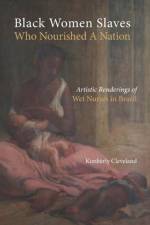av Kimberly Cleveland
1 395,-
Wet nursing in Brazil dates to approximately the late eighteenth century when upper-class families used black women slaves to breastfeed their white infants. Soon use of a black wet nurse became the norm among elite families in various parts of the country. Wet nursing developed into a business based on the need for breast milk, and the purchase, sale, and renting of slaves to meet the demand. In the late nineteenth century, a growing number of medical experts and abolitionists lobbied against wet nursing. Their efforts, combined with the abolition of slavery and the switch to a Republican government, triggered a decline in the practice. Nevertheless, this custom had become so deep-rooted and widespread that it only became fully obsolete in the 1920s. Brazil s history of wet nursing was recorded in artistic renderings. Europeans were the first to depict these black women slaves in their paintings and prints in the first half of the nineteenth century. Subsequently, international and national photographers created studio portraits of wet nurses with their white charges. Only in the twentieth century, when the nation was struggling with race relations post-abolition, did white artists acknowledge that the black women wet nurses were biological mothers, themselves, in their paintings. Since then, a small number of sculptors have used the black wet nurse as an artistic subject. While scholars have identified samba, Carnaval, and Candombl as forms of expression through which to explore the topic of race in Brazil, more studies of how art has functioned as a reflection of race relations are needed. One might expect the anonymous black wet nurse to have faded into obscurity well before the start of the twenty-first century; yet, this female figure remains a durable subject of artistic renderings and discourse on racial politics. This study uses renderings of the black wet nurse as a lens through which to explore broader social developments in Brazilian history and to analyze how artistic representations of this body of women have both followed and challenged dominant attitudes toward race and the memory of slavery. Of the enslaved blacks who were used for a variety of types of labor in the urban and rural settings, and who also feature in artistic renderings, this black wet nurse is the only one who continues to be referenced in contemporary visual culture and discussions of race relations in Brazil. This is the first study to bring together a number of prints, photographs, paintings, and sculptures of this female figure from the nineteenth through twenty-first centuries, from Rio de Janeiro, Bahia, and S o Paulo, and to not only consider the works in their individual artistic and historical contexts, but also in relation to each other. The range of different types of artworks underscores the fact that the black wet nurses were not simply marginalized types, relegated to the memory of the era of slavery, but a complex group of women who, in fact, nourished a nation. Black Women Slaves Who Nourished A Nation: Artistic Renderings of Wet Nurses in Brazil is an important book for art history, Latin American, and African diaspora collections.

